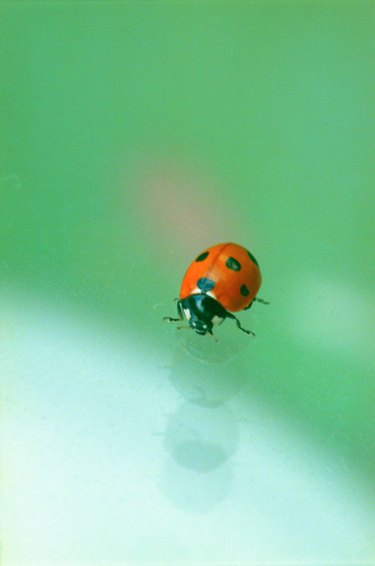
No gardeners want to see little orange bugs on their vegetables and summer flowers. Insects are unappetizing and may be responsible for spreading disease and bacteria among plants. It's important to identify the bugs rather than go after them indiscriminately, because some of those bugs may actually be a big help in garden environments.
Orange Bugs
Video of the Day
Milkweed bugs are small and orange, or reddish-orange, in color. Males and females have black markings on their bodies. Milkweed bugs feed on plants, most commonly the milkweed plant and sunflower seeds, and are usually found on the undersides of the leaves. Mexican beetles also have orange bodies and black markings. Mexican beetles feed on beans in the garden. Squash beetles, which look very similar, eat pumpkin, squash and melons. The bronze orange bug will severely damage citrus trees, sucking the sap right out of fruits and flowers.
Video of the Day
Orange Markings
Stink bugs, which eat tomatoes and other garden plants, have distinct orange markings on their green bodies. Because the green portions of stink bugs blend in so well with surrounding plants, the orange markings stand out. Southern potato wireworms have vivid, orange-red heads at the end of their yellowish bodies. Potato wireworms eat the roots of plants, damaging them from under the ground.
Helpful Bug
Lady beetles, also known as lady bugs, are very helpful in the garden. Not all lady bugs are black and red; they often have orange bodies and distinct markings on them. Lady bugs eat damaging aphids, which feed heavily on plant foliage. In addition to aphids, lady bugs eat thrips, mealybugs and mites. Everything that lady bugs eat is potentially damaging to plants. If you find orange lady bugs in the garden, leave them there.
Immature Bugs
As adults, rove beetles are black or brown in color. Rove beetle larvae look like yellow-orange worms with legs, and they feed on other insects. Minute pirate bugs are black and white in adulthood but yellow-orange while they are nymphs. Nymph minute pirate bugs also prey on damaging insects, including caterpillars, aphids, mites and thrips.
- University of Arizona Extension: Milkweed Bug Information
- NC State University Extension: Pests of Tomato
- University of Kentucky Extension; Ladybugs; Ric Bessin
- NSW Government; Plant Bugs; Dr. Murray Fletcher; May 2007
- North Dakota State University Extension; Using Biological Control to Maintain Natural Order; Denise Olson, et al.; June 2002
- Walter Reeves: Milkweed Bugs